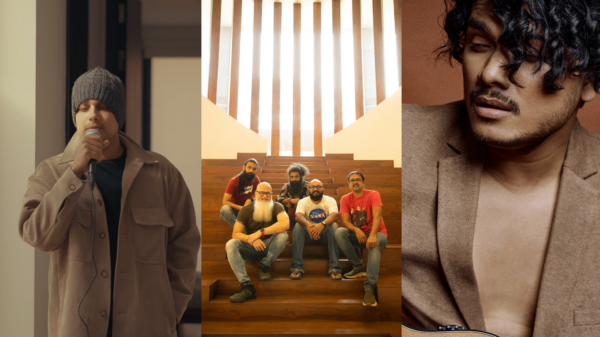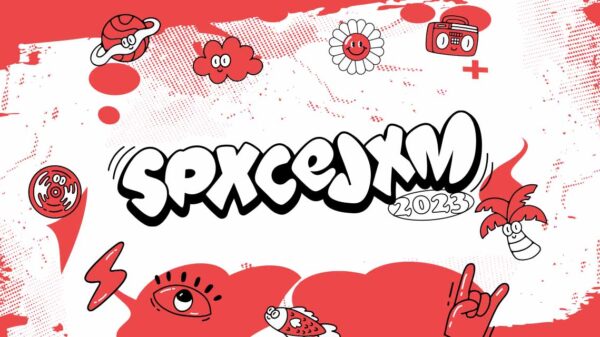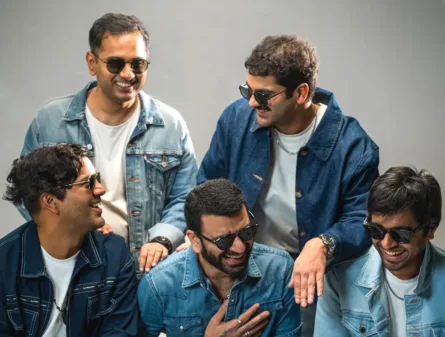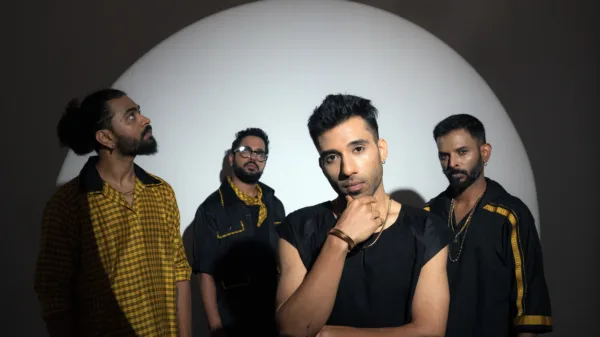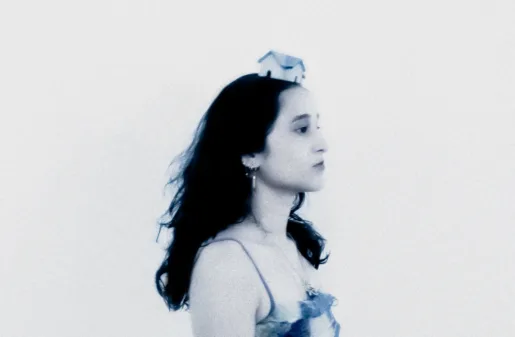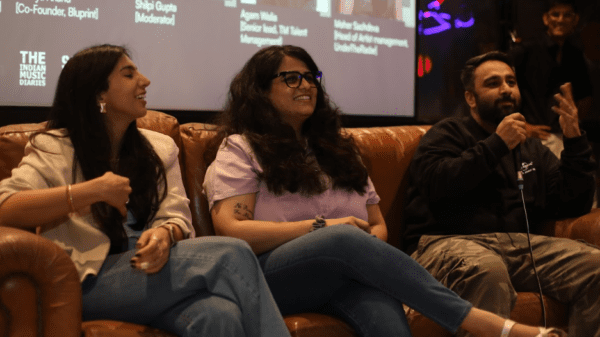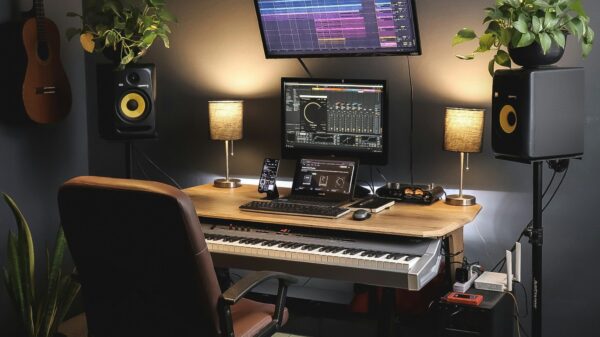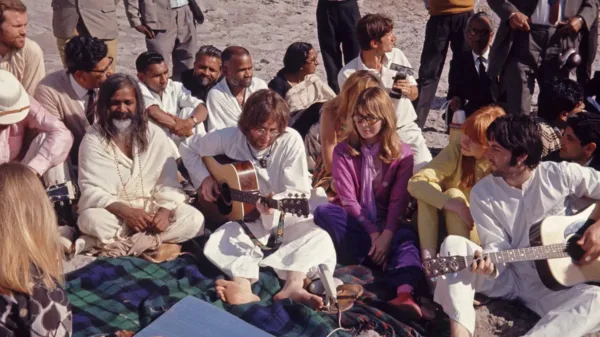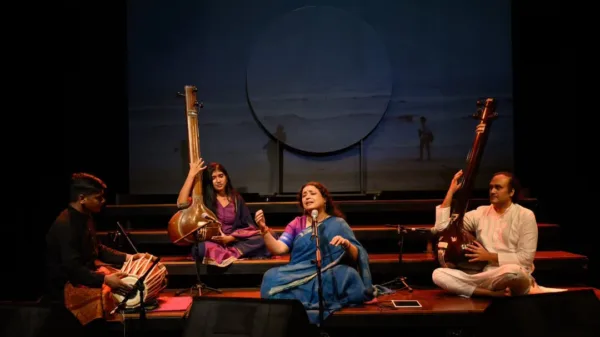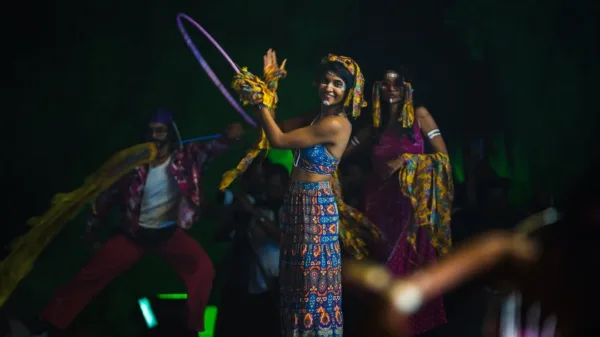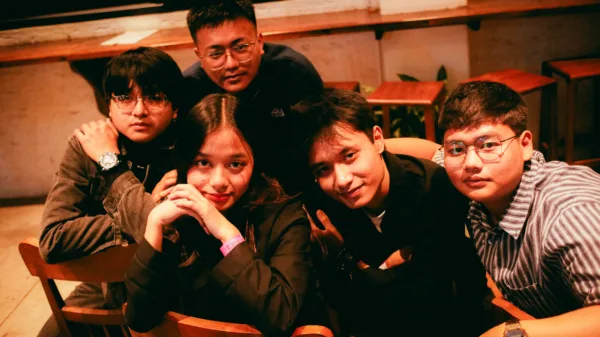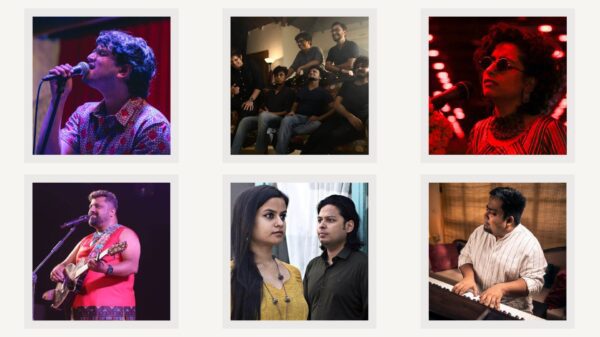Embark on a journey through the rustic symphony of rural India, where melodies weave connections unbridled by any barriers. Nimad, the whispered echo of “under the neem tree,” unfurls as a unique musical canvas. It embodies a poetic tableau where singers and artists in a village converge beneath the grandeur of the largest tree, orchestrating musical sessions openly for souls to savor. Nimad breathes fresh life into timeless folk melodies, blending genres, cherished within small communities.
Behind this endeavor are Bharat Chandore and Jayesh Malani, two multi-instrumentalists with a quest for exploration. They embarked on a 25-day journey to the quaint village of Chichli in Madhya Pradesh. Turning a mud house into a makeshift studio on the Narmada River, they connected with local musical groups, recording and jamming in spontaneous sessions. Nimad hints at a musical fusion, drawing influences from global sounds like Gnawa, New Orleans, and echoes from the Indian and Pakistani subcontinents. It’s a testament to the immersive process crafted by Bharat Chandore and Jayesh Malani, showcasing their journey in the creation of Nimad.
The soothing backdrop of guitar along with the ambience created with the mildest jingles with the most raw flavorful voices. The first song ”Dhanya Dhanya Nimad” is the perfect introduction to the EP that is so creative, vested in the earthly roots of rural India. This is just above a minute long, yet it feels so personal and already etches a beautiful picture in the hearts of the listeners.
Next off “Pyaro Pyaro” begins with a soothing harmonium key, and the vocals that feels nothing short of homespun featuring The Dhangars, Aftab Qadri Qawwal Party (Indore) and Saurabh Suman. Beyond mere nostalgia, it resonates with the heartbeat of daily life in the distant landscapes of Rajasthan. Upon attentive listening, it unfolds a narrative of daily existence—the flavors of local cuisine, the unique attributes of their dwelling place, and the profound connection these hold in shaping individual identities. Amidst these intimate tales, the guitar serves as a poignant reminder of the intricate threads binding villagers and urban dwellers, illustrating the symbiotic dance that shapes our great nation—a harmonious interplay between these two worlds.
”Harbola Blues” is the type of music you would feel is made keeping in mind the current generation of rap-lovers, but it actually is the contrary to it. According to a social media post by ‘Nimad’, “The Harbolas are the OG Indian freestyle rappers who can rhyme and spit about anything under the sun. Back in their hay day, they would go from village to village and climb on the main Panchayat tree where they would start performing the news which eventually became more entertaining as their Sarcasm kicked in. Over time they have reduced quite a bit in number and were the toughest to find in our journey of the hunt for artists.” To have kept such a rare artform alive through modern influences mixed so efficiently, really tops them all.
On the very contrary to this side of the EP is “Saragbhavanti”, which is eerily morose and full of angst. The low music in the background with the strong powerful voices cut through the heart and almost stop passing of the time. “Guru Gyan” begins with raw vocals with the feels of almost listening to it live in a village which you watch the village in life. Slowly it cuts to recorded music under the influence of the saxophone and the strings that is far from the origin of the song. Every bit of the melody still feels personal and ethereal, as if the singers summoned thousand years of ancestors humming the age old tales of the elderly.
“Chichli Dhol” is Dashrath Dada’s dire urge to save the most ancestral form of drumming. His Nimadi culture reeks of the song where festivals and celebrations have songs mandatory including the dhol as the prime instrument. Every bit of this melody is spiritual and harmonious.
“Baat Ghani” is the embodiment of vocal harmonization with minimal yet effective instrumentation. The authenticity of the melody is something straight out of the lands of Rajasthan and the insertion of the Doha(Couplet) in the beginning is the icing on the cake.
“Bichiya” is such a love story full of sweet resentment yet endearing melody of love. It has the perfect display of classical instruments played with a western ones, knit carefully with the adorned vocals. While “Bichiya” has a mild pacing to it depicting the softness in the resentment, “Kajal Kunkoo” is Nimad’s deliberate attempt to show how two extremely different worlds acn sound so much in tune together. The beginning of the song feels like any other Rajasthani folk that begins with an Alap with the classical tonality even with the Harmonium, but the drum set just within a minute changes the entire scenario with the rock and roll vibe set back in time. The tone shift again made it so very unique, extra and loud, which is probably why it is one of the best experiments of this EP.
Nimad becomes a lyrical dance through rural melodies, intertwining the old with the new, the traditional with the modern. Through Bharat Chandore and Jayesh Malani’s musical sojourn, Nimad transcends into an echo beneath the neem tree, a living ballad that unites cultures and whispers across generations. If you are new to their art, this might be the best way to explore it!

